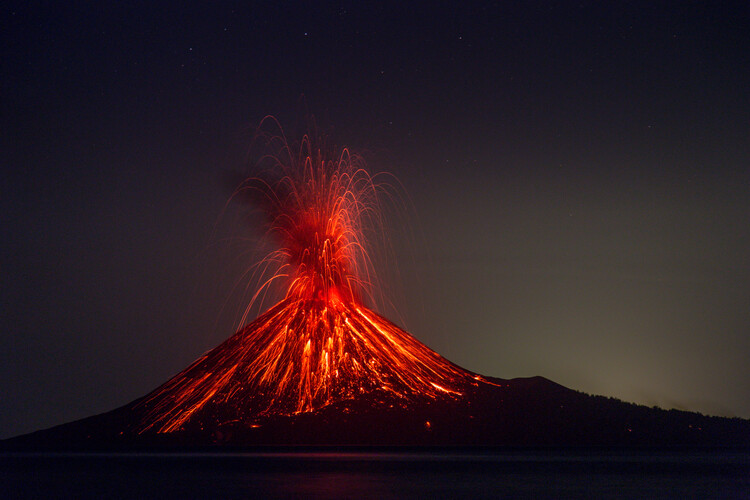
Scientists have discovered that the largest volcanic eruption in recorded history took place 7,300 years ago in the sea off Japan
By
The two most famous volcanic eruptions in history are probably those of Krakatoa in Indonesia and Vesuvius in Italy. When Krakatoa erupted in 1883 it made the loudest sound in recorded history. The explosion was reportedly audible 4,800km away. And when Vesuvius erupted in 79CE it buried the nearby Roman town of Pompeii under ash leaving the town – and its inhabitants – perfectly preserved for tourists to visit today.
So famous are these volcanoes that you might think that they were the biggest volcanic eruptions in recorded history. But not so. For a long time, that honour went to another Indonesian volcano, Mount Tambora, which, on 10 April 1815 exploded in what has long been thought to be the largest eruption in recorded history. The violence of the eruption expelled 150 cubic km of ash, pumice and other rock as well as an estimated 60 megatons of sulphur into the atmosphere. The result of this cataclysmic eruption led to a significant reduction in sunlight reaching the Earth’s surface and an average worldwide decrease in temperatures by as much as three degrees Celsius. The impact was so dramatic that on the opposite side of the world, Europe started to experience summer snowfalls.
But now, a new report in the Journal of Volcanology and Geothermal Research, says that in fact, the largest volcanic eruption in recorded history took place 7,300 years ago when the Kikai-Akahoya eruption ejected at least 332 cubic km of ash and rock off the southwestern coast of Japan.
Scientists have known about this eruption for a long time but the remote undersea location of the volcano, which lies near where the Philippine tectonic plate slides under the Eurasian plate, had long prevented scientists from accurately measuring the eruption size. By using seismic data to create a detailed map of the seafloor around the volcano the scientists who worked on this new study were able to locate underwater volcanic deposits which the team then drilled down into to extract sediment cores which they could assess. The results they came up with showed that the amount of volcanic debris ejected into the sea by the eruption was twice that of previous estimates. By combining this information with estimates of volcanic debris deposited on dry land by the eruption they were able to conclude that the Kikai-Akahoya eruption likely expelled between 332 to 457 cubic km of volcanic debris making it the largest volcanic eruption of the Holocene Epoch, a period of geological time that began 12,000 years ago at the end of the last Ice Age and continues to this day.
Impressive stuff! But, the Kikai-Akahoya eruption still pales against some of the more ancient eruptions, including the biggest known eruption of them all which took place 74,000 years ago when the Toba super volcano in Sumatra, Indonesia exploded.
Related articles:




